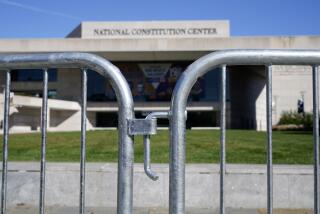A guide to Israeli settlements
In Cairo this month, President Obama urged Israel to stop settlement construction in the occupied territories. “The United States does not accept the legitimacy of continued Israeli settlements,” he said. Israeli Prime Minister Benjamin Netanyahu, in his own policy speech soon after, ardently defended the communities and the people who live in them. “The settlers are neither the enemies of the people nor the enemies of peace. Rather, they are an integral part of our people.”
So what’s all the fuss? We present a guide for the perplexed.
For starters, what’s a settlement?
As used today, the term usually refers to an Israeli community built in the territories that Israel conquered in the Six-Day War in June 1967. Israel removed its settlements from the Sinai after making peace with Egypt in 1979, and unilaterally evacuated its Gaza Strip settlements in 2005. So the dispute today deals with the Golan Heights and especially the West Bank. Some of the settlements are tiny, but many are large suburban towns such as Maale Adumim, east of Jerusalem, and Ariel, east of Tel Aviv. These bedroom communities have attracted Israelis, both secular and religious, looking for inexpensive homes. The fastest-growing are those intended exclusively for ultra-Orthodox Jews. With low incomes and large families, the ultra-Orthodox need cheap housing. Playing to that need, successive Israeli governments have drawn them to towns such as Modiin Illit, southeast of Tel Aviv, where more than 40,000 people now live. The great majority of settlers live in large towns, most of them close to the Green Line.
What’s the Green Line?
It’s the armistice line between Israel and its Arab neighbors, drawn in 1949 at the end of Israel’s war of independence. It’s also known as the pre-1967 border. After the Six-Day War, Israel extended Israeli law to East Jerusalem (and later, the Golan Heights), which in practical terms meant annexation. But the rest of the West Bank remained under military occupation, with Palestinian autonomous rule in some areas. No other country has recognized Israeli sovereignty in East Jerusalem or the Golan Heights. So for international purposes, the Green Line is the border between Israel and occupied territory. The most recent Israeli figures found about 290,000 Israeli settlers in the West Bank, not counting East Jerusalem.
And what about East Jerusalem?
In the annexed areas, Israel has built large neighborhoods where nearly 200,000 Israelis now live. Israel considers those neighborhoods part of sovereign Israel. The U.S., like other countries, calls them settlements.
When did all this start?
The first settlement in the Golan Heights was quietly established by young Israelis from left-wing kibbutz movements in July 1967, with the quiet help of government officials and army officers. The first West Bank settlement, Kfar Etzion, was established by Orthodox Israelis in September 1967 with public fanfare and government backing.
What’s an outpost?
The outposts are small, unofficial settlements, usually clumps of mobile homes on a hilltop, created after the government stopped approving new settlements in the mid-1990s. Though they lack legal authorization, they’ve received extensive help from state agencies -- as a scathing government-commissioned report documented. Under the U.S.-backed 2003 “road map” for peace, Israel is required to evacuate outposts built since 2001. So far, only a few tiny ones have been dismantled -- and settlers have subsequently rebuilt them.
So why have settlements been built?
They are intended to “establish facts” -- to ensure continued Israeli control of part or all of the occupied territory. For some settlement advocates, the main purpose is security -- to add territory to make Israel more defensible. For others, the key point is that the West Bank -- referred to as Judea and Samaria -- is part of the historic Jewish homeland. Israelis learn the Bible as their national history, and places in the West Bank such as Hebron, Bethlehem and Shiloh are the setting of much of that history. Religious settlers believe God promised the land to the Jews and that Israel’s settlement of it is a fulfillment of that promise. In practice, every Israeli government since 1967 has promoted settlement -- helping to fund construction and providing financial incentives to settlers. Left-wing governments have focused on areas they considered important for security and where few Palestinians live. Right-wing governments have encouraged settlement throughout the West Bank.
Why is this a problem?
Since 1967, some Israelis have argued that keeping the West Bank creates an unbearable dilemma. If Israel maintains permanent rule over the Palestinians without giving them citizenship, it ceases to be a democracy. If it annexes the territory and grants them citizenship, it will no longer be a country with a Jewish majority -- contradicting the most basic goal of Zionism. Today, the only practical way out of this dilemma is a two-state solution, with the Palestinians receiving independence in the Gaza Strip and all or nearly all of the West Bank. To create a Palestinian state that is more than fragmented enclaves, most or all settlements must be evacuated. Continued construction only makes this more difficult.
Where has America been until now?
In principle, the U.S. has consistently opposed all settlements, including the Jewish neighborhoods of East Jerusalem. However, most administrations have avoided confrontations over the issue, especially when peace negotiations were underway. In the meantime, settlements kept growing. Public diplomatic tussles during the Carter and George H.W. Bush administrations were exceptions.
Speaking of America, aren’t most settlers from the U.S.?
Absolutely not. The misconception that settlements are heavily American may stem from foreign correspondents looking for English-speakers to interview when they visit.
Why the tension today?
Obama is insisting that Israel freeze further building in settlements, as called for in the road map. That position fits his goal of achieving a two-state solution. Netanyahu insists that building is needed to allow for “natural growth” of settlements. But settlements have been growing much more quickly than the rest of Israel. Decisions to build, as always, are political choices intended to “create facts.” Obama doesn’t want construction to preempt negotiations. Unlike most previous presidents, he is insisting that American opposition to settlements is more than mere words.
More to Read
Sign up for Essential California
The most important California stories and recommendations in your inbox every morning.
You may occasionally receive promotional content from the Los Angeles Times.










